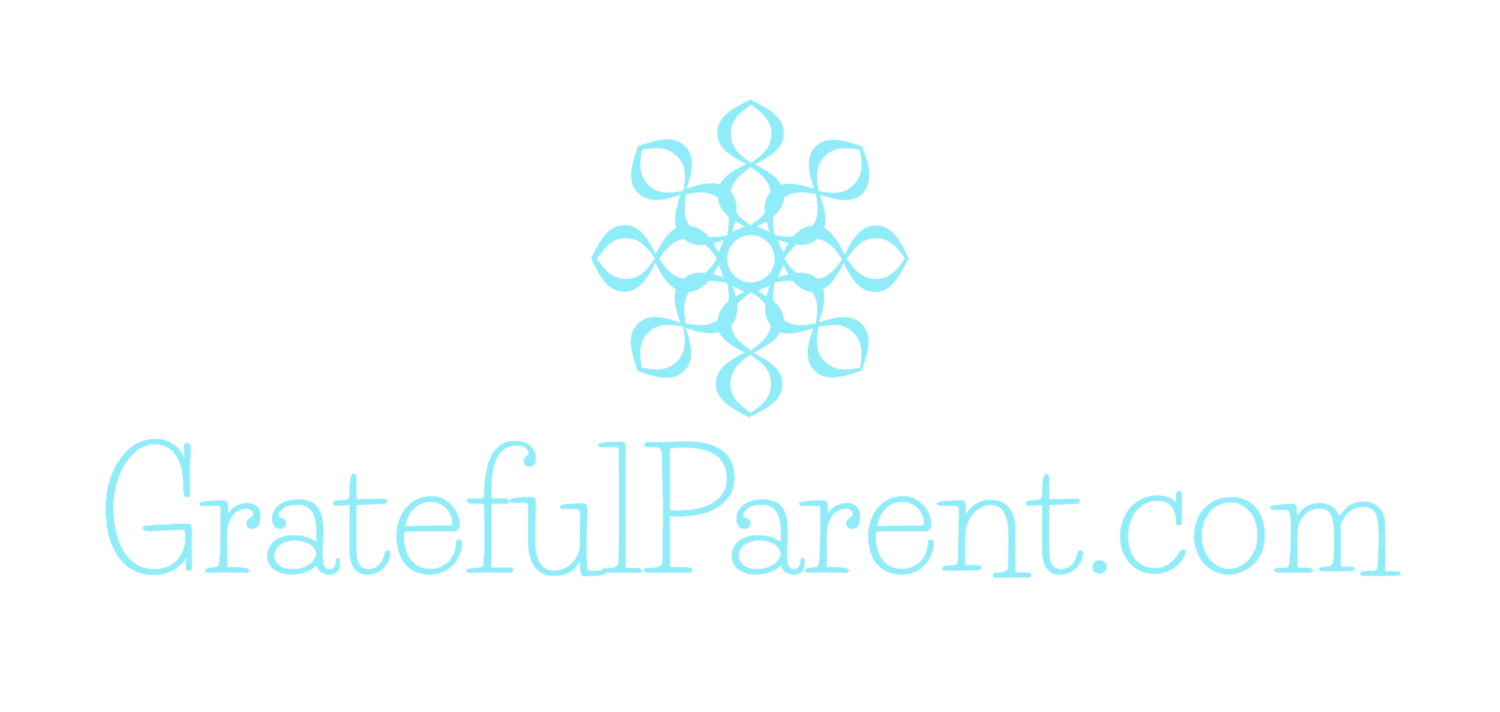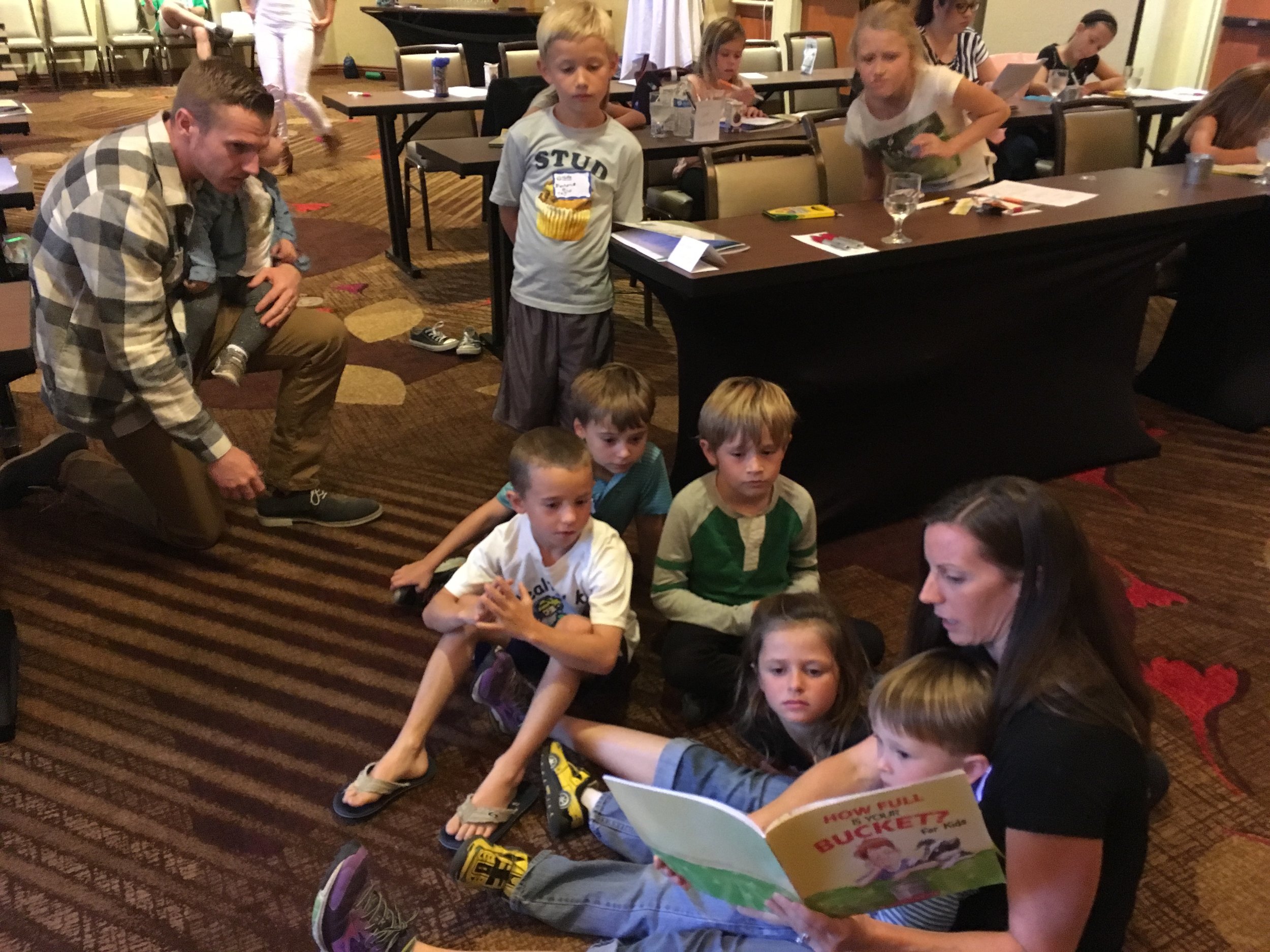This year the 1Life Fully Lived West Coast Conference theme was "Adventure of a Lifetime." This was very fitting because it was the first time we publicized and sold tickets to kids and adults alike. Inviting kids to a conference like this one changes the energy in a great way. At 1Life we encourage the participants to "play full out," and what better way to do that than to take the lead from some kids! It was awesome to see them up on stage jamming out to Brotha James and this year they had their own room with programming just for them.
I had the honor to lead two sessions for the kids. The first was a CHARMS session where we used a big foam die with the words Creativity, Health, Affirmations, Reading, Meditation and Service printed on it to play Miracle Morning. I had the kids take turns throwing the die until we did all six CHARMS. "Creativity" was first. I gave each child a coloring page from The Miracle Morning: Art of Affirmations coloring book and some markers. They colored for a few minutes until we had to move due to limited time, but I reassured them the markers and coloring pages would be there all weekend if they wanted to come back to it.
Next, they rolled "Service." Instead of performing a service, I read the kids a book about service, How Full is My Bucket for Kids, and we crossed off Service and Reading. We also brainstormed some ideas that they could do at home to be of service to their family and in their community. Next up was Affirmations. My son Tyler came up and said his affirmations which the other kids repeated. The next roll was Health. We went to the back of the room where there were no chairs and played some Simon Says. There were jumping jacks, squats, and even Burpees. We finished the session with a guided meditation on the app Insight Timer. I did a favorite of my kids call Smile Relaxation by Andrew Johnson. He guides you to breathe in and on the exhalation smile. After the meditation, I asked the kids how they were feeling and they all agreed they were happy!
The other session I led in the kid's room was vision board creation. I love to see how kids approach this process. Some fill up the entire page with only pictures, some use a combination of pictures and words, some like to draw their own pictures, some are done in 5 minutes while others wanted more than the 50-minute time slot. My big takeaway from this session was the ease in which children take on this activity. For the adults, I teach a 50-minute class just on why you'd want to, the science behind vision boards and how to create a vision board. However, kids need very little instruction. They dig right into the magazines and start cutting a gluing. Kids are decisive. They may not even know what something is, but they know that they like it. In adult vision board sessions, I can see the participants struggle with their self-worth and hesitate to put certain things on their boards, but not in a kids session. One young girl put nothing but dogs on her vision board! A young man had a crime scene on his board. When I asked him about it, he informed me he wanted to be a police officer when he grew up. As Picasso said, "Every child is an artist. The problem is to remain an artist when we grow up."
At the conference, I also had to joy of hearing from some amazing speakers and thought leaders. Jon Vroman kicked off the conference by teaching us to live life in the front row. He says, "When your WHY has heart, your HOW gets legs." In other words, when we are living on purpose and have that fire in our soul about a cause we can figure out how to get there. 1Life is all about dreaming, planning and living your best life. Figuring out your WHY is in the dreaming stage. When we dream about the life we want to live, the people we want to help and the problems we want to solve, that is finding our WHY.
Jon encouraged us to write down the 8 people in our front row. Who are the people that show up for you no matter what? As Jim Rohn says, "You are the average of the five people you spend the most time with." If the people you spend the most time with are not people you admire, it may be time to get purposeful about your peer group and start actively seeking better relationships. This exercise was a struggle for me. I have an amazing peer group, but the people I spend the most time with are my kids. I have to really be intentional to spend quality time in adult conversation and to fill myself up with books and podcasts to balance the sheer length of time I spend with my kids.
On day two, we got to soak up some wisdom from the co-author of Play Bigger: How Pirates, Dreamers, and Innovators Create and Dominate Markets, Chris Lochhead. He shared the idea that legendary innovators make their place in the world and not the other way around. These innovators are what he calls "category designers." He went on to name a few examples including Picasso, Elvis and the founder of 1 Life, Tim Rhode. The companies and products that design the category are overwhelmingly the winners of market share in that category. He gave the example of Birdseye Frozen Foods. While on an ice fishing trip, Clarence Birdseye had an "aha moment" that he could flash freeze food and enjoy fresh-tasting food in the dead of winter. There was no such thing as frozen food before that moment. He now had his WHY, he just had to figure out the HOW. He first needed to figure out how to flash freeze food, then he needed to be able to ship the food and keep it frozen, there needed to be freezer sections in grocery stores and finally homes needed a freezer to keep the food fresh. He had a lot of hurdles to jump over but did just that. Today almost 100 years later, Birdseye is the leading producer of frozen foods.
Category design conditions the brain. When we change the way people think we can change what they value. Our brains need categories to create mental tags and assign things value. Humans are pack animals. Basically, we like what others like. This again goes back to our peer group. If everyone we know drives a BMW and wears designer clothes, we will adapt to that. If everyone we know binge watches Netflix and eats fast food, we will adapt to that. Chris gave us seven ideas to become a category designer:
- Follow your problem, not your passion. Find a problem you can get behind (frozen food) and figure out how to solve it and you will define the category and rule it.
- Design a category that matters. People will get behind your solution if you solve their problem, but not if you are solving a problem that doesn't exist for them.
- Design the category with a point of view. Tell a story as to how you solve the problem in a new way. For example, Southwest vs United. They both fly places, but Southwest has created a new category of discount travel and a culture of playfulness.
- Meet the world where the world is and then move them, don't try to compete. For example, Netflix vs Blockbuster. Netflix started as a mail service for physical movies and as movies became more readily available in digital form they shifted their client base to that medium. Netflix did not try to compete with Blockbuster, but created a new category and knocked Blockbuster out of business.
- Be different (not better)! A new company will never be better than the category king. Pepsi will never beat Coke, but an entirely new beverage very well could replace Coke.
- Condition the market. With new ideas comes resistance and it's up to the category designers to properly educate the market to need their product or service.
- Drive it like you stole it! When it's go-time, don't hesitate and put your all into it.
My last big takeaway was from a man who is changing the world named Will Little. At 19, he was locked up for 10 years for 3rd degree murder, but instead of viewing his incarceration as an arrest, he looked at it as a rescue. He treated his time in prison as his college education. He said, "Change is easy, transformation is hard." He talked about the power of choices and to change any outcome all you have to do is change your choices. He wants a different outcome for the kids raised by the streets and is doing his part by teaching peace, forgiveness and anti-bullying through his amazing poetry.
I'm grateful for the 1Life community and the positivity it is spreading in the world. I'm grateful for all the 1Life presenters who gave of their time, energy, and money to share their knowledge and tools with others. I'm grateful for the takeaways I had and to be able to share them with you ;) I'd love to hear your feedback. Please comment below or join the conversation in our Facebook Community.
In Gratitude,
Lindsay :)





